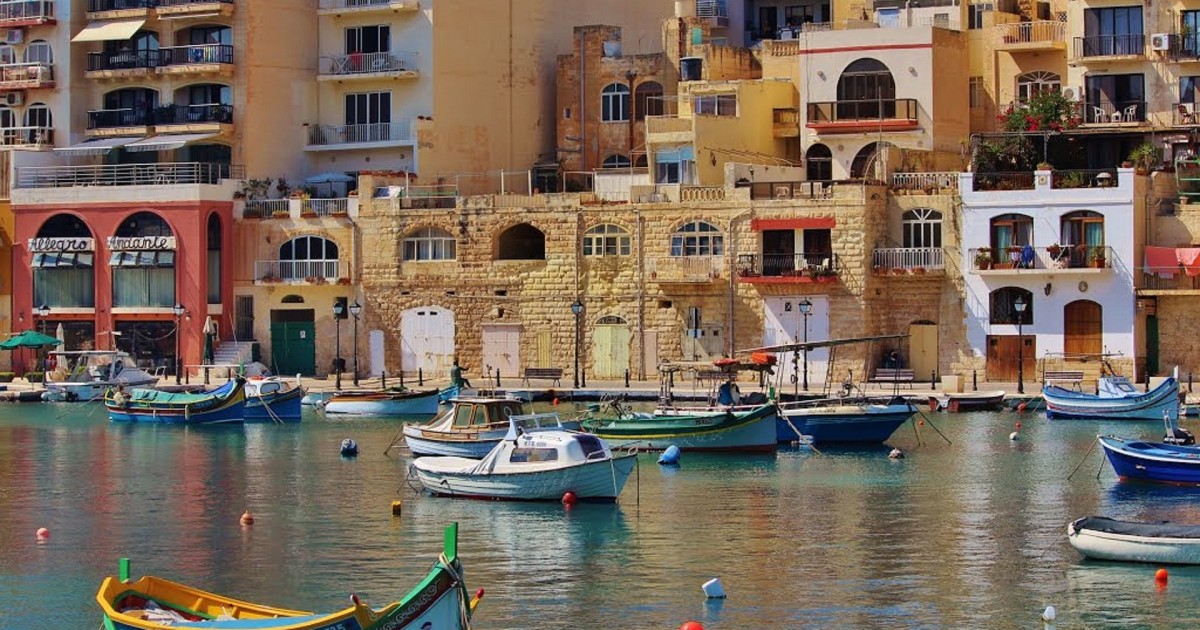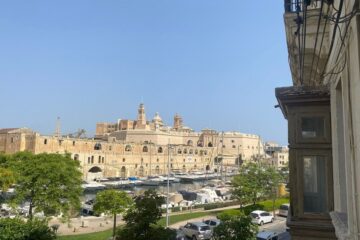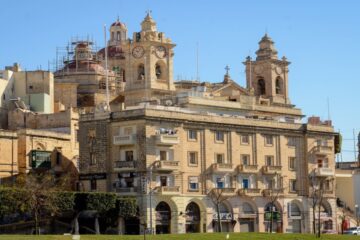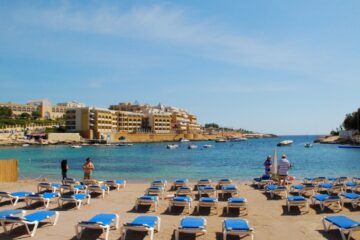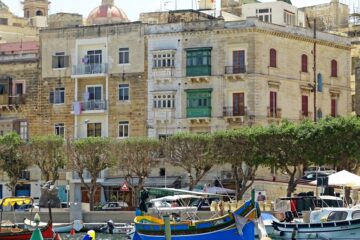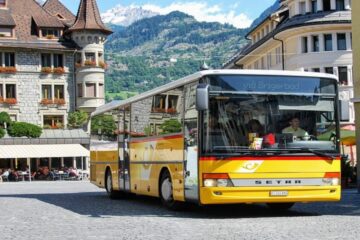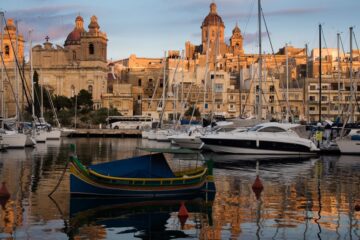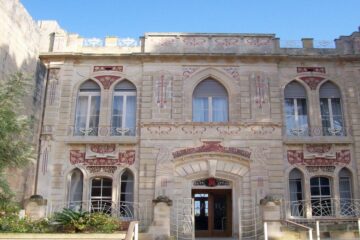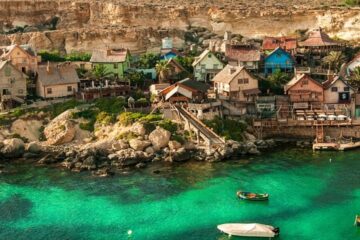Malta is a small country situated in the heart of the Mediterranean Sea, and it has been home to many civilizations throughout its long history. It is known for its amazing archaeological sites, beautiful beaches, and vibrant culture. This article will uncover some of the most interesting facts about Malta that are sure to fascinate any curious traveler. From its rich archaeological history to its stunning natural wonders, Malta has much to offer to those who seek adventure and exploration beyond the typical tourist destinations. Discover all that this breathtakingly beautiful island nation has to offer by learning more about its fascinating past and present.
History facts of Malta
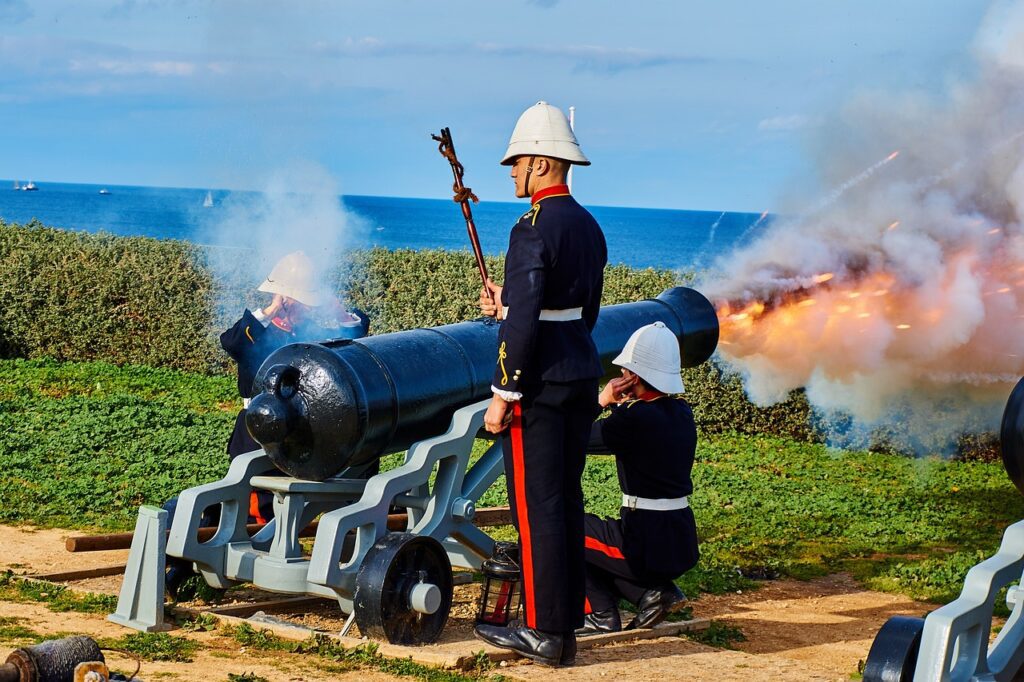
Malta has long been a destination for travelers, due to its rich history and cultural influence from various empires. Malta is an archipelago composed of three islands located in the Mediterranean Sea; it was once governed by the Phoenicians, Romans, Arabs, and Knights of St. John before becoming a British protectorate in 1800. Malta offers visitors a plethora of experiences that span all eras of history, from ancient temple ruins to baroque palaces and medieval fortresses. The country also boasts some of the most beautiful beaches in Europe, with stunning turquoise waters and colorful marine life that can be explored through scuba diving or sailing excursions. The vibrant culture is evident everywhere you go in Malta with festivals throughout the year celebrating food, music, and traditional customs. It’s no wonder so many people visit this incredible island nation each year! With its stunning scenery and diverse culture, Malta provides an unparalleled experience for those looking for adventure and discovery. By uncovering fascinating facts about Malta, visitors can gain insight into this unique destination and explore its captivating past.
1. Malta used to be a part of Europe
Geological research suggests that the Maltese islands were formerly connected to Sicily and potentially mainland Italy approximately 17,000 years ago. This connection between Malta and Europe has long been theorized in history books, but only recently have scientists been able to confirm it through geological findings. By understanding this link between Malta and Europe, we can gain insight into how ancient civilizations moved across the Mediterranean Sea and interacted with each other. There was likely a rich exchange of culture, knowledge, technology, religion, art, and even language between these two regions at some point in time. This connection with mainland Europe also explains certain features found on the Maltese islands today, such as their unique architecture and megalithic temples, which are older than Stonehenge!
2. The Megalithic temples of Malta are older than Stonehenge
Recent geological evidence has revealed that the megalithic temples of Malta are older than Stonehenge, a prehistoric monument built approximately 5000 years ago. This puts the construction of the megalithic temples between 3600 BC and 3000 BC, making them older by around 2000 years. It is believed that this served as the model for Stonehenge’s construction because of how similar its structure and function were. The discovery of these ancient sites provides new insight into early human civilization and its impact on the development of modern society. This significant archaeological find helps shed light on our ancestors’ way of life and gives us an understanding of how they lived before modern advancements were made. Transitioning to the next section, it’s also interesting to note that the word “Malta” comes from the Greek dictionary, which means honey-sweet or honeybee.
3. The word “Malta” comes from the Greek dictionary
Investigations into the origins of the word ‘Malta’ have revealed that it is derived from the Greek dictionary, indicating a likely allusion to the honey made by an endemic species of bee. References to Malta Melite (honey-sweet) in ancient texts have further supported this allusion.
The long and varied history of Malta is indicative of its historical significance; prior to the Knights of St. John’s conquest in 1530, it was under the control of the Phoenicians, Carthaginians, Romans, Byzantines, Arabs, and Spanish. Thus, uncovering interesting facts about Malta provides us with an opportunity to explore its dynamic history as well as its unique natural environment.
4. The Knights of St John ruled Malta
The Knights of St. John were the rulers of Malta from 1530 to 1798, making a lasting impact on the island’s culture and history. During the Great Siege in 1565, the knights were defending the island against Ottoman forces. This heroic feat resulted in a lasting legacy that is still remembered today, with Maltese people using the eight-point cross as a reference to their past conquerors. Furthermore, they adopted various symbols as reminders of their Christian legacy, such as flags and monuments that also commemorated their valiant efforts in defending Malta. As such, it can be said that the Knights of St. John left an indelible mark on Malta’s history and culture, which will continue to be remembered for years to come. Moving forward, we will look at how Christianity has shaped Maltese society over time.
5. Christian Legacy
Christianity has been a major part of Malta’s history and culture for centuries, leaving an indelible mark on the island nation. The Knights of St. John are credited with bringing Christianity to Malta when they took control in 1530. They were responsible for establishing and expanding the church as well as creating numerous religious sites. Churches like St. John’s Co-Cathedral, which Grandmaster Jean de Valette constructed in 1577, serve as evidence of their legacy. This cathedral is one of the most important examples of Baroque architecture in Europe and is home to two Caravaggio masterpieces. In addition, the annual Good Friday procession reenacts Christ’s crucifixion through statues depicting the fourteen stages of his journey from Jerusalem to Calvary. Numerous thousands of people attend this distinctive event each year, which serves as a reminder of Malta’s strong Christian heritage and how it still affects its citizens today. Transitioning into the next section, it is here that we uncover more about Saint Paul’s shipwreck, which changed the course of Maltese history forever.
6. St. Paul’s shipwreck
The shipwreck of St. Paul on the island in 60 A.D. further solidified Malta’s Christian heritage. As detailed in the New Testament, he was stranded and swam to shore, seeking shelter in a cave, when his ship wrecked at St. Paul’s Bay. The Maltese people then welcomed him and treated him with kindness, for St. Paul healed the governor’s father from a fever, which ultimately cemented Malta as a Christian nation, with Saint Paul being celebrated as its national emblem up to this day. This episode serves as an enduring reminder of Malta’s religious history and its commitment to Christianity, which has been maintained since antiquity until today.
Malta has also endured many rulers over the two thousand years of its history, most notably foreign powers who occupied it during various periods in time, such as the Phoenicians, Romans, Greek Byzantines, Arab Muslims, Normans, Sicilians, and Spanish before it eventually became part of the British Empire from 1814 until 1964 when it gained independence from Britain.
7. 11 foreign rulers ruled Malta in the past 2000 years
Malta has experienced eleven different foreign rulers in the past two millennia, each leaving a unique cultural mark on the country. These include:
- The Carthaginians
- The Phoenicians
- The Romans
- The Arabs
- The Byzantines
- The Normans
- The Spanish
- The Sicilians
- The Knights Templars
- The French
- The British
These various conquerors have left behind a legacy of different artifacts and monuments that can be seen around Malta today, providing a glimpse into its rich and varied history and reminding us of its turbulent past as a battleground for different empires seeking to gain control over it for their purposes and ambitions. This fascinating timeline of foreign rulers has shaped Malta into the diverse culture we see today, with influences from all across Europe and beyond!
8. The Mosta Dome survived World War II
On April 9, 1942, the Mosta Dome miraculously endured a German bombing that could have destroyed it completely during World War II. The tremendous explosion of the 500 kg bomb shattered the roof and created an immense hole, yet fortunately, when it touched the ground, it did not explode. A fake bomb is still visible in the back of the church as a reminder of this miraculous event. Many locals consider this incident to be one of Malta’s most astounding demonstrations of good fortune. The Mosta Dome has become a symbol of Maltese resilience and unity that have endured through even the darkest times in history.
9. Malta Houses three World Heritage Sites
With its three World Heritage Sites, Malta is an important part of the international heritage landscape. Valletta, the Al Saflieni Hypogeum, and the Megalithic Temples of Malta are all safeguarded by international law and are regarded as extremely important to humanity. Each site is preserved for the benefit of all nations, providing a unique window into the past while still offering opportunities for visitors to appreciate its grandeur. In addition to these sites, seven other locations in Malta have been included in UNESCO’s tentative list for future consideration. These include the Coastal Cliffs, Victoria Citadel, Dwejra, Knights’ defenses around Malta’s harbor, Maltese Catacombs, Mdina, and the Victoria Lines fortifications; each waiting to be explored and discovered by curious visitors from around the world.
10. Home to Queen Elizabeth
Situated just outside of Valletta, Villa Guardamangia is a majestic home that provided the then-princess Elizabeth and her husband with a rare opportunity to live as a ‘regular’ couple during their marriage. As they lived in this elegant mansion between 1949 and 1952, Queen Elizabeth often spoke fondly of this period; providing insight into why Malta is the ideal location for anyone wanting to live like royalty. The property was put up for sale in 2019, offering those with financial means a chance to own an impressive piece of history. Such opulence allows visitors to explore the country’s culture and history on their terms while discovering thrilling activities beyond its borders. From trekking along cobblestone streets in Valletta to enjoying watersports off St. Paul’s Bay, Malta offers plenty of ways for travelers to experience unparalleled joy and freedom.
Malta Travel Facts
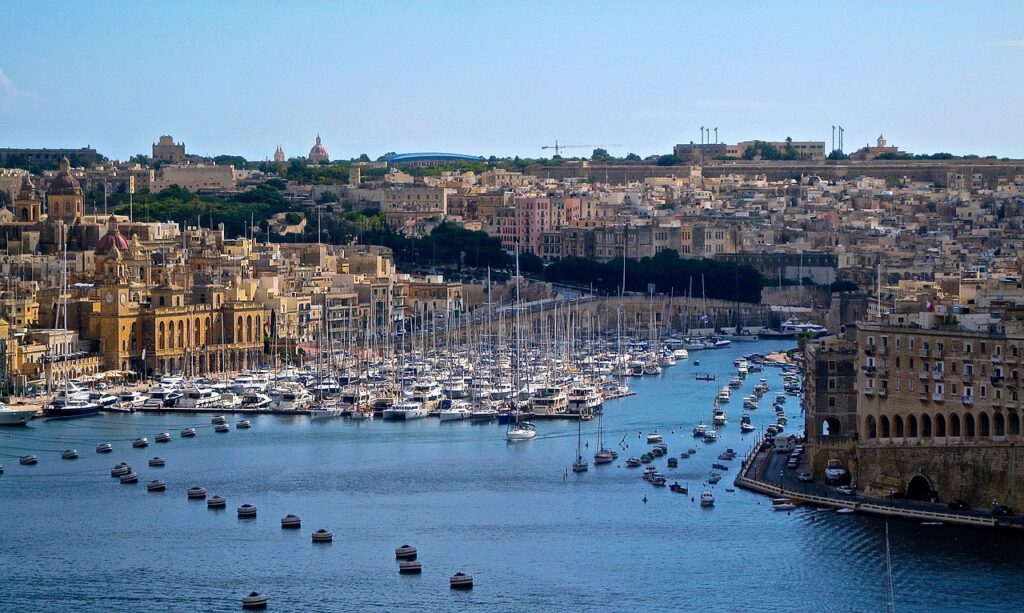
Malta presents an array of opportunities for travelers to explore, from its rich culture and history to thrilling activities beyond its borders. With stunning beaches, lively nightlife, a vibrant art scene, and numerous historical sites, Malta has something for everyone. From the ancient temples of Ħaġar Qim and Mnajdra to the historic forts of St. Elmo’s and Valletta, visitors can get a glimpse into what makes this small island so unique. For those looking for an adrenaline rush, Malta offers everything from mountain biking to water sports like scuba diving and parasailing. The sunny climate year-round means that outdoor activities are at their peak throughout the summer months. To top it all off, many resorts have spa treatments available so travelers can relax in style after a day of exploration. With so much to offer visitors, Malta is sure to be an unforgettable destination.
Beyond the sights and attractions on land, there is another side of Malta that lies beneath the surface—literally! The underground tunnels of Malta offer a unique way to explore this fascinating country, with secret passageways running beneath Valletta as well as near several other cities such as Mdina and Rabat. Despite the fact that knights used these tunnels for military purposes during World War II, they now offer an intriguing look into Maltese history and a unique underground experience to intrepid travelers.
1. Underground tunnels of Malta
The subterranean tunnels of Malta offer an intriguing insight into the country’s past, providing visitors with a unique opportunity to explore the hidden depths of the island. The tunnels were initially excavated during the Great Siege of Malta in 1565, and since then they have been used for protection as well as for storing freshwater supplies. These underground passages are filled with history and secrets from days gone by, and provide a fascinating glimpse into Malta’s past. Visitors can travel these enigmatic, centuries-old pathways and marvel at the engineering prowess required to build them. One is sure to feel motivated by the courage of those who dug these tunnels so long ago after the experience. Additionally, exploring these tunnels will give visitors an appreciation for Maltese culture and its ability to survive through tumultuous times. From this underground adventure, travelers can gain an understanding that Malta is much more than sun-filled beaches; it is also a land steeped in history and tradition. Transitioning now to another interesting fact about Malta: tap water is safe for drinking.
2. Tap water is safe for drinking
Reverse osmosis is used in Malta to purify ocean water, ensuring that tap water is safe to drink. This process involves the use of specialized filters and membranes to separate contaminants from pure water molecules. By utilizing this method, Malta has been able to provide a reliable source of potable drinking water for its citizens. Here are some key points about this process:
- Reverse osmosis removes impurities, toxins, and chemicals from ocean water
- It requires no added chemicals or treatments during the filtration process
- The end product is safe for human consumption
- It can be used in a wide variety of applications, including industrial and agricultural processes. With reverse osmosis, Malta has been able to provide clean drinking water for its residents without compromising on safety or quality. As such, it remains an integral part of life in Malta and a major asset to its people.
Transitioning into the next topic, one must consider the importance of understanding the geography of Malta with its three main islands: Gozo, Comino, and Malta itself.
3. The three Main islands of Malta
Situated in the Mediterranean Sea, Malta comprises three main islands: Gozo, Comino, and Malta itself. The largest and most populated is the main island of Malta, where over 420,000 people live and work. Gozo is the second largest island, with a population of around 32,000 people. It offers some of the best swimming sites on the island as well as delectable regional cuisine. Finally, Comino is much smaller in comparison but still popular among day-trippers for its incredible Blue Lagoon and the sea caves that surround it. You can travel to Gozo by ferry from Ċirkewwa; tickets cost €4.65 and take 25 minutes one way. With its trio of islands offering unique opportunities for exploration and adventure, Malta has something special to offer all types of travelers! Moving on from here, we can explore some of the other interesting attractions that these islands have to offer, such as the centuries-old ruins in Gozo.
4. 5,600 years old ruins in Gozo
On Gozo, the Ggantija Temples reveal an astounding time capsule of history, with ruins that date back to 5,600 years ago. Visitors can explore these ancient structures and gain insight into Malta’s past:
- The walls are made up of enormous stones, which give them their name; giants were thought to have built the temples.
- There is evidence of animal and human sacrifices within the complex.
- The temple complex is considered one of the oldest free-standing monuments in Europe.
- It is a UNESCO World Heritage Site, and visitors can rent a car from a local shop to get there.
- You can find artifacts such as pottery shards, tools, and weapons that offer clues about life in this period.
These ruins allow us to uncover interesting facts about Malta’s past and culture, offering a unique look at the island’s history. Next, we will explore Malta’s delicious bakery treats!
5. Delicious Bakery Treats
Malta boasts an array of delectable bakery treats, most notably Pastizzi and Qassatat. Pastizzi are typically filled with ricotta cheese or peas and cooked hot and fresh in the oven, giving them a crisp flavor. Qassatat is quite different but equally delicious. It comes in pie style and combines several ingredients, including spinach, peas, and anchovies, for an exquisite taste. For truly delightful treats, one can visit Tad-Dulcier or La Logia Cafe in Malta. To experience these two local favorites firsthand is sure to be an unforgettable adventure that will leave one with a new appreciation for Maltese cuisine. With its traditional flavors combined with modern flair, it’s no wonder why Malta has become such a popular destination among foodies seeking out unique culinary experiences. Moving on from this topic of delicious bakery treats of Malta into another topic about how ‘Game of Thrones Season 1 was shot in Malta’ would provide yet another interesting insight into the country’s culture.
6. Game of Thrones Season 1 was shot in Malta
Malta’s stunning scenery and captivating culture made it the ideal filming location for the first season of HBO’s hit series, Game of Thrones. From its breathtaking limestone cliffs to its historic Mdina Gate, Malta offers a unique backdrop for an epic fantasy adventure. The famous scenes that took place at the Verdala Palace and Fort St. Angelo were all filmed in Malta, giving viewers a glimpse into a world filled with mystery and intrigue. The island nation was also used to film some of the more iconic moments from Season 1, including Daenerys Targaryen’s wedding procession through King’s Landing. Malta is full of fascinating locales that make it an ideal home for the show’s fantastical elements and captivating storylines. It is no wonder why Game of Thrones chose this ancient land as their filming destination; every corner of this small country is brimming with history and beauty. With its quaint villages, winding streets, and hidden caves, Malta provides an amazing setting for telling tales of dragons and knights in shining armor. As viewers watch these scenes unfold on screen, they can take comfort in knowing that much of what they are seeing was filmed right here in Malta, home to the silent city and beyond.
7. Home of the silent city
Mdina, known as the ‘Silent City’, is renowned for its well-maintained fortifications and churches. The Phoenicians founded this city in 700 B.C., and the Bible even makes reference to it in the life of St. Paul. While over 200 people still reside in Mdina, not much happens during the day; however, at night, you can understand why this city has earned its nickname of Silent City. With its ancient walls and churches that are still standing strong today, it’s easy to see why visitors flock to this unique place from all over the world.
The streets of Mdina are lined with an array of restaurants offering a variety of cuisines and bars with live music performances that attract many tourists each year. Whether you’re enjoying a leisurely stroll through these historic streets or admiring a spectacular view from one of Mdina’s lookout points, there is something here for everyone who enjoys sightseeing and exploration. From stunning architecture to captivating cultural heritage, Mdina offers plenty of activities to keep visitors engaged during their stay in Malta’s silent city. Next up on our journey of uncovering interesting facts about Malta – we’ll be heading off to explore a blue lagoon paradise!
8. Blue Lagoon Paradise
Situated in the Mediterranean Sea, the Blue Lagoon is a tranquil paradise that has become increasingly popular among tourists seeking to experience its breathtaking beauty. From swimming in the crystal-clear waters of this picturesque lagoon to taking a 30-minute ferry from Malta for around €5, there are plenty of activities and attractions to enjoy at the Blue Lagoon:
- Activities:
- Swimming
- Snorkeling
- Kayaking
- Fishing
- Attractions:
- Catamaran cruises
- Boat rides
- Restaurants on islands nearby
The Blue Lagoon provides visitors with an unforgettable experience that cannot be found anywhere else. With its turquoise water and stunning views, it’s no wonder this charming spot has become one of Malta’s most treasured gems. Moving on from here, we will explore some of the cities near Malta, such as Vittoriosa, Senglea, and Cospicua.
9. Cities of Vittoriosa, Senglea, and Cospicua
Located across the Grand Harbour from Valletta, the three cities of Vittoriosa, Senglea, and Cospicua offer an array of historical points of interest for visitors to explore. Vittoriosa was the first residence of the Knights of St. John during their participation in the Great Siege of 1565. This city is named “Victory” in English due to its significance in Maltese history. Senglea also holds a special place in Maltese history, as it served as one of the principal fortifications during that siege. Cospicua is situated at the back of two converging peninsulas and is home to The Church of Our Lady, a renowned building that draws many tourists every year. Each city has its own unique attractions and beautiful sites that make them worth exploring while visiting Malta. From vibrant plazas to ancient churches, these cities are sure to provide visitors with a memorable experience as they uncover Malta’s fascinating history and culture. With all this on offer, it’s no surprise why so many people flock here annually for vacation. It offers a sense of freedom that no other place can provide! With all these cities providing delightful experiences, one could only wonder what kinds of beaches there are around Malta too.
10. All Types of Beaches
Malta boasts a great variety of breathtaking beaches, ranging from white sandy shores to dramatic rocky cliffs and deep blue swimming holes.
- Golden Bay and Ghajn Tuffieha are the most popular beaches in the north, near Mellieha, with their soft white sands and crystal-clear waters.
- These two locations also offer stunning views of the Mediterranean Sea, making them ideal spots for sunbathing or simply admiring nature’s beauty.
- On the other hand, more adventurous swimmers can explore Malta’s craggy cliffs and hidden coves.
- These provide an exciting challenge to experienced divers, offering unique opportunities to encounter marine life up close.
Whether you’re looking for a relaxing day by the beach or seeking an adrenaline rush underwater, Malta has something for everyone!
Malta’s Generic Facts
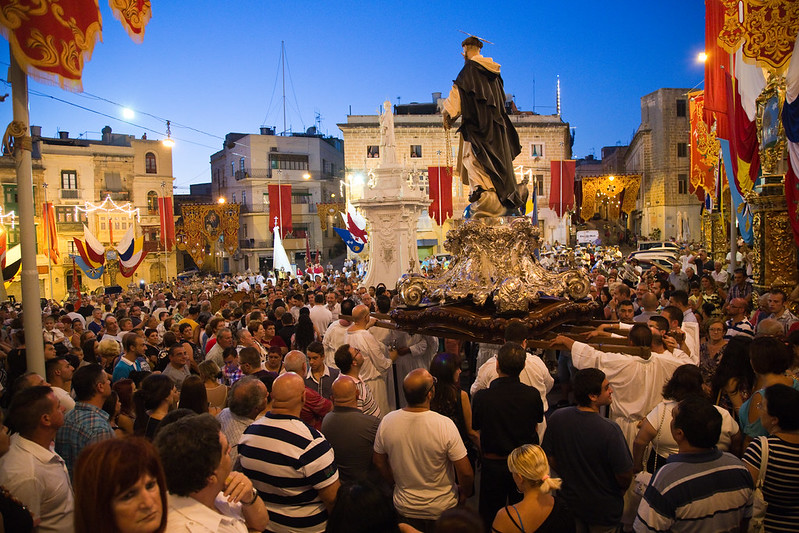
Located in the Mediterranean Sea, the Republic of Malta is a small archipelagic country with an ancient historical influence. It is steeped in history and culture, making it a popular tourist destination that offers something for everyone. Since the Neolithic era, people have lived there. Later, the Phoenicians, Romans, Byzantines, Arabs, and Normans occupied the land before it became a British colony in 1813. Today, Malta is a member of both the European Union and NATO, as well as the Commonwealth of Nations. The Maltese Islands are renowned for their natural beauty and unique architecture; they are home to seven UNESCO World Heritage Sites, including Valletta – Europe’s smallest capital city – which showcases Baroque-style buildings from its 16th-century heyday. In addition to this rich history, Malta also has a thriving economy based on services such as banking and finance; tourism remains one of its largest industries. With its attractive tax incentives and competitive labor costs, it is also becoming increasingly popular as a location for filming movies due to its diverse range of landscapes, from rugged hillsides to picturesque beaches.
1. Malta is a common filming location
Malta has become an increasingly popular location for feature films, as large-scale blockbuster productions have chosen to shoot on this small island. Over the years, major productions such as Game of Thrones, Gladiator, World War Z, and Captain Phillips have been filmed on the islands. Some of the most stunning locations include:
- The Azure Window – a limestone rock arch featured in Game of Thrones;
- Fort Ricasoli – a huge fortification located at the entrance to Malta’s Grand Harbour, was used in Gladiator;
- The Malta Film Studios – where scenes from World War Z were filmed; and
- Mdina – the old capital city of Malta, is featured in Captain Phillips. With its picturesque villages and rich history, Malta offers filmmakers ample opportunities for creative expression. Whether it’s a historical period drama or a modern-day action movie, Malta is an ideal filming location that can be tailored to meet any need. Plus, with its Mediterranean climate and abundance of sunny days, it is no wonder why Hollywood keeps coming back again and again! This makes visiting Malta an exciting experience for tourists who are looking to explore the same beautiful locations that feature in their favorite films.
2. You can visit a different church every day
With its numerous churches scattered across the island, Malta offers a unique opportunity to explore a different place of worship each day. From cathedrals and basilicas to chapels, the country is home to 359 churches, which represent the country’s long-standing Christian heritage. It is an awe-inspiring experience to see the grandeur of these structures up close and explore their rich history. Visiting a new church every day can be a fascinating journey into Malta’s past and religious culture. With such an abundance of churches, it could take months or even years for one to visit them all – providing travelers with plenty of opportunities for spiritual exploration.
From its vibrant culture and stunning architecture to its abundant wildlife, Malta provides visitors with countless ways to connect with nature and discover something new.
3. Malta houses some unique animals
There are many different animals on the island of Malta, some of which are particular to the area and have not yet received a classification from taxonomists. Some species, such as the Maltese wall lizard, blue rock thrush, and spur-thighed tortoise, can only be found in Malta, making this small archipelago even more special. The country also has a handful of rare insects, such as Tmetocera Punctata, that have been identified but remain largely unknown. These creatures serve as an important reminder of how nature can thrive in unexpected places despite human intervention or impact on the environment. Furthermore, they shed light on the need for further conservation efforts in order to protect these fragile species from extinction. Despite its small size and lack of large bodies of water or wood, Malta’s wildlife should not be underestimated; it is full of surprises and rewards those who take the time to explore it.
This appreciation for nature carries over into other aspects of Maltese culture: football fans tend to support either Italy or England due to their shared history, while music festivals often feature traditional instruments like drums and flutes. There’s no denying that Malta has something for everyone—from its unique wildlife to its vibrant culture—and will continue to surprise us with its hidden gems if we give it a chance.
4. Maltese football fans tend to support either Italy or England
Exploring the history of Malta reveals a passionate allegiance to either Italy or England among football fans. During World Cup or Euro events, Malta splits in two; while England supporters typically watch the game in Bugibba, Italy supporters head to St. Julians. This is an interesting phenomenon considering that, for a population of 450 000, Malta has more than 300 000 registered cars. It is clear that Maltese people take their football very seriously and have strong allegiances to either England or Italy.
5. For a population of 450 000, Malta has more than 300 000 registered cars
Given its small population, Malta has an unusually high number of registered cars; with over 300,000 registered cars for a population of 450,000. This is likely due to the Maltese people’s strong attachment to their cars and their traditional custom of gifting children vehicles when they turn 18 years old. In addition, the lack of public transportation makes having a car necessary for many people in order to get around the island. It appears that car ownership is deeply entrenched within Maltese culture and is here to stay for the foreseeable future.
The prevalence of car ownership has made living without one almost unfathomable in Malta; this contributes towards making it difficult for those who do not own a vehicle or cannot afford one as they are limited in terms of access to other areas in the country. Furthermore, this can be seen as indicative of a wider trend whereby independence through car ownership is highly valued by the Maltese people – providing them with an extra degree of freedom and autonomy.
6. Children living with parents until marriage is very common
It is common for Maltese children to live with their parents until marriage, a cultural practice that has become deeply entrenched within the nation. This includes:
- An expectation is that the children will remain at home and take on responsibilities such as chores, cooking, and caring for younger siblings.
- A strong sense of family values, where parents are seen as authority figures in the household.
- Beliefs that it is important to maintain an extended family dynamic where everyone can contribute to the success of the family unit.
This shared commitment to family life helps create a strong bond between Maltese families, which often lasts beyond marriage and into adulthood. It also serves as a way of passing down traditional values from generation to generation, making it an integral part of Maltese culture. With this in mind, it’s no surprise that many young adults choose to stay close by when attending university or college in Malta instead of relocating away from home.
7. Maltese people speak 3 different languages
Maltese people have a unique linguistic capability, being able to fluently converse in three distinct languages: Maltese, English, and Italian. This is a result of the island’s long history of conquest by numerous nations, which has led to foreign influences on the Maltese language and culture. Growing up with access to television stations broadcasting in both Maltese and Italian has enabled many young children to learn both languages from an early age, thereby allowing them to possess this unique linguistic aptitude. The presence of English as another national language was solidified when Malta voluntarily joined the British Empire in 1813; however, its influence on the local population had been present much earlier due to international trade links that existed between Malta and Britain. This trilingualism is one of the more interesting facts about Malta, which makes it stand out from other countries around the world.
8. Malta voluntarily joined the British Empire
In 1813, Malta officially joined the British Empire voluntarily after previous international trade links between the two countries had been established. This decision was taken in order to ensure that Malta would benefit from the improved security and economic opportunities that were offered by being part of the British Empire. The Maltese people saw the advantages of being a colony of Britain, as they could benefit from increased trading opportunities with other countries in the Empire as well as access to military protection. Furthermore, it allowed Malta to become an important strategic base for Britain’s naval activities in the Mediterranean Sea, further strengthening their relations. As a result, Malta and its people gladly accepted the opportunity to join the British Empire at a time when many other nations were falling under imperial rule. Ultimately, this voluntary decision has proven to be beneficial for both Britain and Malta over time.
9. Everyone knows everything about everybody
Due to the strong emphasis placed on communication and relationships, Maltese society has become known for its comprehensive knowledge of the lives of others. People are constantly catching up with one another and exchanging stories about their friends, family, neighbors, and coworkers. This often results in a wide range of news stories that might be completely true or exaggerated.
On one hand, this serves as a source of entertainment and amusement for many people in Malta; on the other hand, it can be intrusive and oppressive at times when personal boundaries are crossed. The gossip culture in Malta is so prevalent that certain anecdotes are accepted as common knowledge even if they are untrue. As such, one must take any information with a grain of salt before passing judgment. Despite this caveat, however, there is no denying that everyone knows something about everybody else due to this communal style of communication.
10. No Forests in Malta
Lacking forests of any significant size, Malta stands out from other Mediterranean islands in terms of its lack of woodland areas. This is due to the fact that the small island nation has barely 1% forest coverage, which is mainly comprised of Buskett woods and a few scattered trees around the country. However, this does not mean that nature has been neglected in Malta; instead, it has been embraced as part of the Maltese culture. The natural environment of Malta is home to a variety of wildlife, including several species endemic only to the island. Despite not having vast forests like those found elsewhere in Europe, there are plenty of ways for visitors to experience nature up close and personal while they explore all that Malta has to offer. From hiking trails through lush valleys and rocky coastlines to exploring centuries-old ruins nestled among wildflowers, there are countless opportunities for adventurers and outdoor enthusiasts on this beautiful Mediterranean island.
Frequently Asked Questions
Malta has been part of Europe since 1964, when it joined the Council of Europe. Its close proximity to Sicily and its strategic location in the Mediterranean has made it an important trading hub for centuries, and today it is a vibrant member of the European Union.
The origin of the word “Malta” is likely derived from the Greek term meli, meaning honey. It was possibly chosen to describe the island’s abundance of wildflowers and bees producing high-quality honey. The Romans later adopted the term to refer to Malta as one of their provinces.
The Mosta Dome, located in Malta, survived World War II due to its thick limestone walls and its central location away from military targets. This unique structure has withstood several bombing raids and is a testament to the strength of Maltese architecture.
Malta is home to a number of underground tunnels, some of which date back centuries. A few of these tunnels are open to the public and provide an intriguing insight into the country’s history. Exploring them can be both adventurous and educational.
Tap water in Malta is safe for drinking. It undergoes rigorous testing on a regular basis and meets the strictest health standards. It has been described as clean, clear, and refreshing.
Conclusion
Malta is an island with a rich history and culture. It has been part of Europe for centuries, and its megalithic temples are older than Stonehenge. The Knights of St. John once ruled Malta, which derives its name from the Greek dictionary. Visitors can explore the silent city or take in the beauty of its beaches, including the Blue Lagoon paradise. Cities such as Vittoriosa, Senglea, and Cospicua also offer unique experiences to visitors. There are all types of beaches on Malta’s coasts that provide an ideal getaway for those looking to relax or simply enjoy its captivating landscape. All these facts make Malta one of the most interesting places to visit in Europe, where tourists can learn about its fascinating past while enjoying its breathtaking presence.

